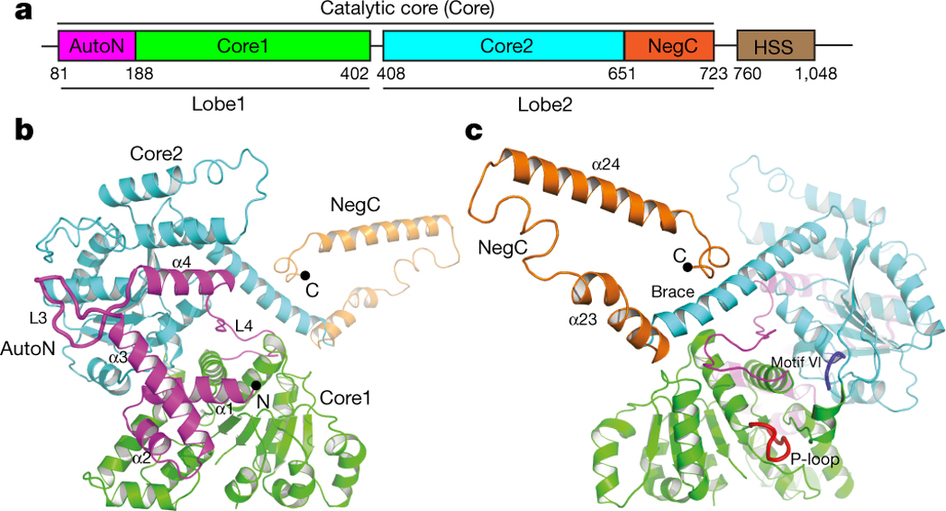About
News and Events
Beamlines
- User Facilities
- Beamlines Directory
- BL08U1-A
- BL08U1-B
- BL09U
- BL13W1
- BL14W1
- BL14B1
- BL15U1
- BL16B1
- BL17U1
- BL01B1
- BL17B1
- BL18U1
- BL19U1
- BL19U2
Technology
- Accelerator Physics
- Accelerator Operations
- Radio Frequency
- Beam Instrumentation
- Control Systems
- Electronics & Detector
- Mechanical Engineering
- Vacuum
- Magnets
- Magnet Power Supplies
- Pulse Technique
- Cryogenics
- Front Ends
- Optics
User Information
Science and Publications
Structure and Regulation of the Chromatin Remodeller ISWI
12-12-2016
ISWI is a member of the SWI2/SNF2 family of chromatin remodellers, which also includes Snf2, Chd1, and Ino80. ISWI is the catalytic subunit of several chromatin remodelling complexes, which mobilize nucleosomes along genomic DNA, promoting replication progression, transcription repression, heterochromatin formation, and many other nuclear processes. The ATPase motor of ISWI is an autonomous remodelling machine6, whereas its carboxy (C)-terminal HAND–SAND–SLIDE (HSS) domain functions in binding extranucleosomal linker DNA. The activity of the catalytic core of ISWI is inhibited by the regulatory AutoN and NegC domains, which are in turn antagonized by the H4 tail and extranucleosomal DNA, respectively, to ensure the appropriate chromatin landscape in cells11. How AutoN and NegC inhibit ISWI and regulate its nucleosome-centring activity remains elusive. Here we report the crystal structures of ISWI from the thermophilic yeast Myceliophthora thermophila and its complex with a histone H4 peptide. Our data show the amino (N)-terminal AutoN domain contains two inhibitory elements, which collectively bind the second RecA-like domain (core2), holding the enzyme in an inactive conformation. The H4 peptide binds to the core2 domain coincident with one of the AutoN-binding sites, explaining the ISWI activation by H4. The H4-binding surface is conserved in Snf2 and functions beyond AutoN regulation. The C-terminal NegC domain is involved in binding to the core2 domain and functions as an allosteric element for ISWI to respond to the extranucleosomal DNA length. Diffraction data from crystals of ISWI (81–723) and ISWI (406–754)–H4 complex were collected at the beamline BL17U of Shanghai Synchrotron Radiation Facility.

Overall structure of MtISWI
Links: Doi:10.1038/nature20590


 Copyright©2006.12 Shanghai Advanced Research Institute.
Copyright©2006.12 Shanghai Advanced Research Institute.